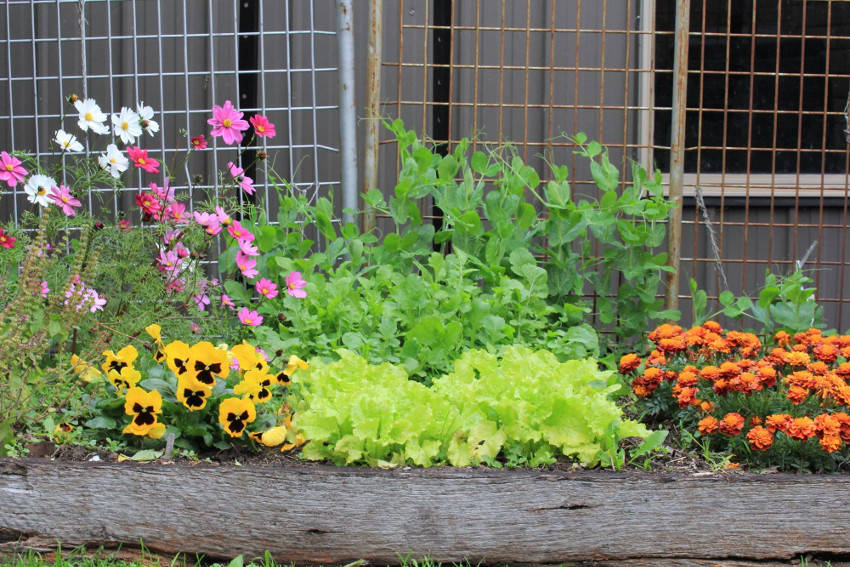The key to gardening success is to help nature do what it wants within the limits you set. But unless you're happy to embrace total chaos, careful planning is needed to get the most out of your plants and the space available to grow them in.
Choosing the right range of species for your local conditions is vital. But there's a more basic consideration when putting your growing plans together - it's important to know and understand the life cycles of the individual plants you choose.
These life cycles come in three categories known as annual, perennial, and biennial.
Annual Plants
Annual plants complete their entire life cycle in a single growing season. The seed will germinate, and then develop a root system, stems, and leaves. Once mature, the plant will flower, produce seeds, and then die off. The newly produced seeds will then stay dormant until the cycle begins again next season.
It's important to note that although this process will always be completed within a year, it can also be much quicker. Some vigorous species, such as dandelions, can produce several generations within a single season. However, these highly productive plants are still classed as annuals.
Advantages of Annuals
One obvious gardening advantage of annual plants is speed of growth. You'll see the success or failure of a new seed type within a few short months, rather than waiting several years for full maturity. This offers gardeners plenty of scope for experimentation and variety - if something doesn't work this year, there's always next.
However, a more practical benefit is that annuals tend to pack a lot of activity into their relatively short life cycles. They have one shot at producing the next generation, and usually go all-out to achieve it.
Because of this, annual blooms such as marigolds can flower repeatedly over a long period, giving season-long interest in a border. Likewise, annual vegetables such as zucchini or runner beans will fruit again and again to produce an abundant harvest for as long as they survive.
Perennials
Perennial plants can stay alive for several years, and produce many rounds of flowers and seeds over their entire life cycle. Technically, a perennial is any plant that lives for three growing seasons or more, but in common use the term usually describes smaller herbaceous plants rather than larger trees, bushes, and shrubs.
Perennials can either be evergreen, meaning they keep their foliage all year round, or they can die back in winter before reappearing in spring from the same root base.
Decorative perennial evergreens can add permanent structure to a garden, but will often require pruning and other kinds of maintenance to keep them growing attractively and productively.
However, most perennials don't bloom as spectacularly or for as long as annuals, taking a more measured approach to producing the next generation.
Biennials
Just to make things a little more complicated, there's a third type of life cycle a gardener needs to know about. Biennials occupy a halfway house between annuals and perennials, spreading their life cycles over two full growing seasons.
In the first year, the seeds will germinate, and the plant will focus on developing a root system along with minimal overground foliage. After a period of dormancy over winter, the plant will put on a fresh growth spurt in year two, before finally flowering and setting seed. Once the next generation's seeds have been produced, the plant will die.
Biennials aren't as common as the other two types, although vegetable gardeners will be familiar with carrot, turnip and silverbeet among others. Common biennial flowers include foxgloves, wallflowers, and pansies.
Blurring the Lines
However, as so often in gardening, things don't always stay within these neat boundaries. Not all plants are typically grown according to their natural cycles.
Some plants which are commonly thought of as annuals are in fact perennials, including some tomatoes, chillies, and geraniums. These plants live as perennials in their native climates, but are too tender to survive anything but the mildest of winters if grown elsewhere.
Although it's often possible to over-winter these plants with a little care, their speed of growth and fruiting in their first year means it's not usually worth the effort, and so they're most often treated as annuals and grown for a single season.
Other plants which are thought of as annuals are actually biennials. For example, parsley and many other leafy herbs produce their familiar foliage in the first year, and are usually discarded at the end of autumn. However, if they survive a winter, they'll go on to flower and set seed in their second year.
Onions also follow a two-year life cycle, although most gardeners only see half of it. When onion seeds are sown, by the end of year one they'll have produced bulbs and this is where most gardeners harvest. However if the plants are left in the ground they will die back, then re-spout, produce flowers, set seed, and then die.
Finally, some annuals and biennials can effectively be treated as perennials. Many varieties of herbs and flowers will happily self-seed, returning year after year in the same spot with a fresh generation of entirely new plants.
But even putting these complications aside, when planning your garden it's important to take account of the real-world life cycle of plants.
Sowing times for annuals are important if you want them to reach their potential in a single year, while planting perennials is a commitment that may take a few years to pay off.
Either way, understanding how long each plant will take to grow helps you plan a garden that's productive and attractive across the seasons, and for years into the future.






